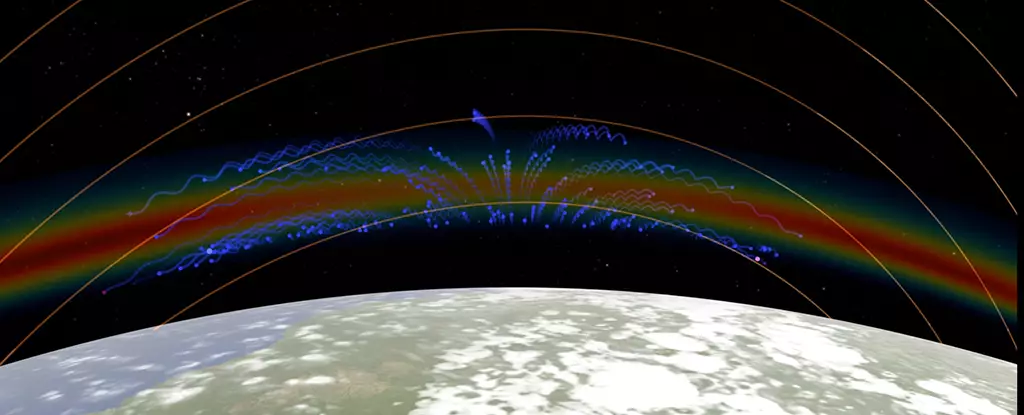Recent discoveries by NASA scientists have shed light on peculiar shapes found in Earth’s ionosphere, located approximately 48-965 kilometers above our planet’s surface. These shapes, resembling the letters ‘X’ and ‘C’, have previously been observed but are now better understood thanks to the Global-scale Observations of the Limb and Disk (GOLD) imaging instrument. The ionosphere becomes charged during the day due to sunlight, creating plasma bands that are influenced by Earth’s magnetic field and form the observed shapes. Surprisingly, these shapes have been detected during both geomagnetically disturbed and quiet conditions, suggesting the involvement of localized factors that are not yet fully understood.
One of the intriguing findings in the study is the appearance of C-shaped and reverse C-shaped bubbles in the plasma. These shapes are believed to be influenced by Earth’s winds, yet GOLD has identified instances where these Cs are forming closer together than previously observed. The proximity of these shapes, sometimes only 634 kilometers apart, hints at localized factors such as wind shear or other atmospheric phenomena playing a role in their formation. While these tightly packed C shapes remain relatively rare, with only two observed by GOLD so far, the researchers are eager to delve deeper into understanding what triggers their appearance in the ionosphere.
Plasma in the ionosphere plays a crucial role in enabling radio waves to travel long distances, as well as supporting GPS operations. Any disruptions in the ionosphere, like those documented in this study, have the potential to impact communication and navigation infrastructure on Earth. Therefore, gaining a better understanding of the dynamics of plasma shapes in the ionosphere is essential for improving the reliability of communication systems and mitigating potential risks associated with space weather events.
The advancements in technology, exemplified by instruments like GOLD, have significantly enhanced our ability to study and comprehend the complex dynamics of Earth’s atmosphere and beyond. The data collected by GOLD not only offers valuable insights into the formation of alphabet soup shapes in the ionosphere but also showcases the continuous evolution and adaptation of scientific research methods to unravel mysteries of the universe. As astrophysicist Jeffrey Klenzing from NASA’s Goddard Space Flight Center points out, the diversity of shapes observed in the ionosphere underscores the intricate nature of atmospheric dynamics that were previously underestimated.
The recent discoveries of X and C-shaped plasma formations in Earth’s ionosphere serve as a reminder of the vast complexities and unknowns that continue to exist within our planet’s atmosphere. By utilizing advanced imaging technologies and conducting in-depth studies, scientists are gradually deciphering the enigmas hidden in the ionosphere, paving the way for enhanced space weather forecasts, improved communication systems, and a deeper understanding of Earth’s interconnected systems.


Leave a Reply